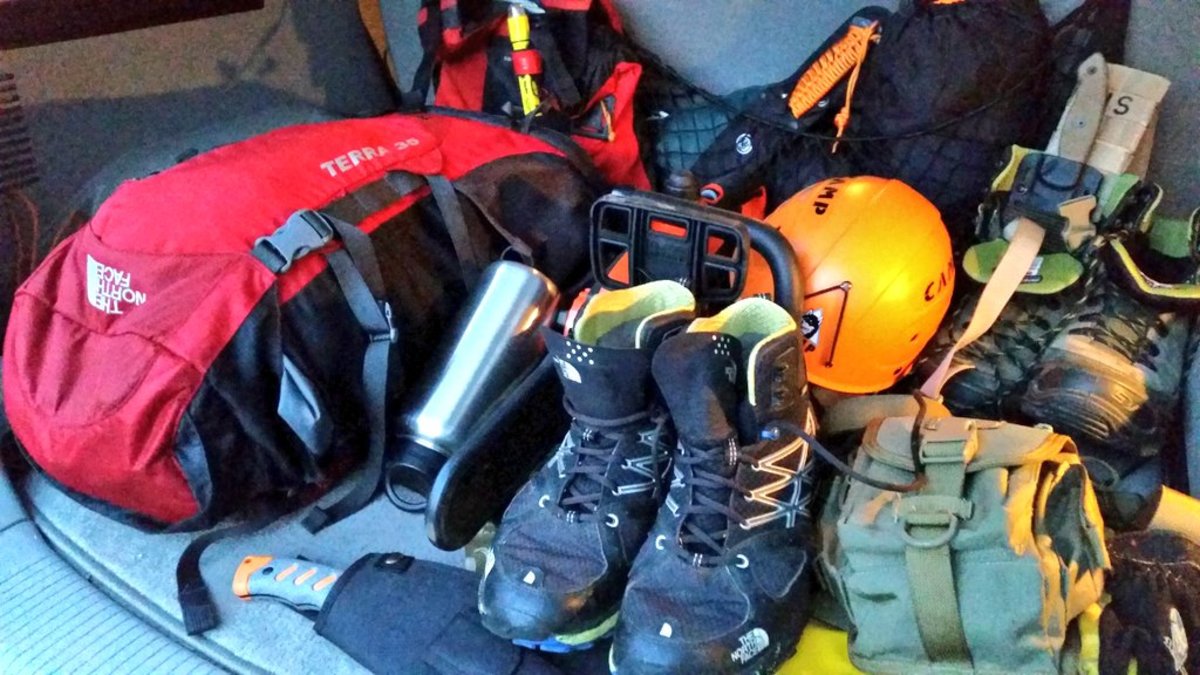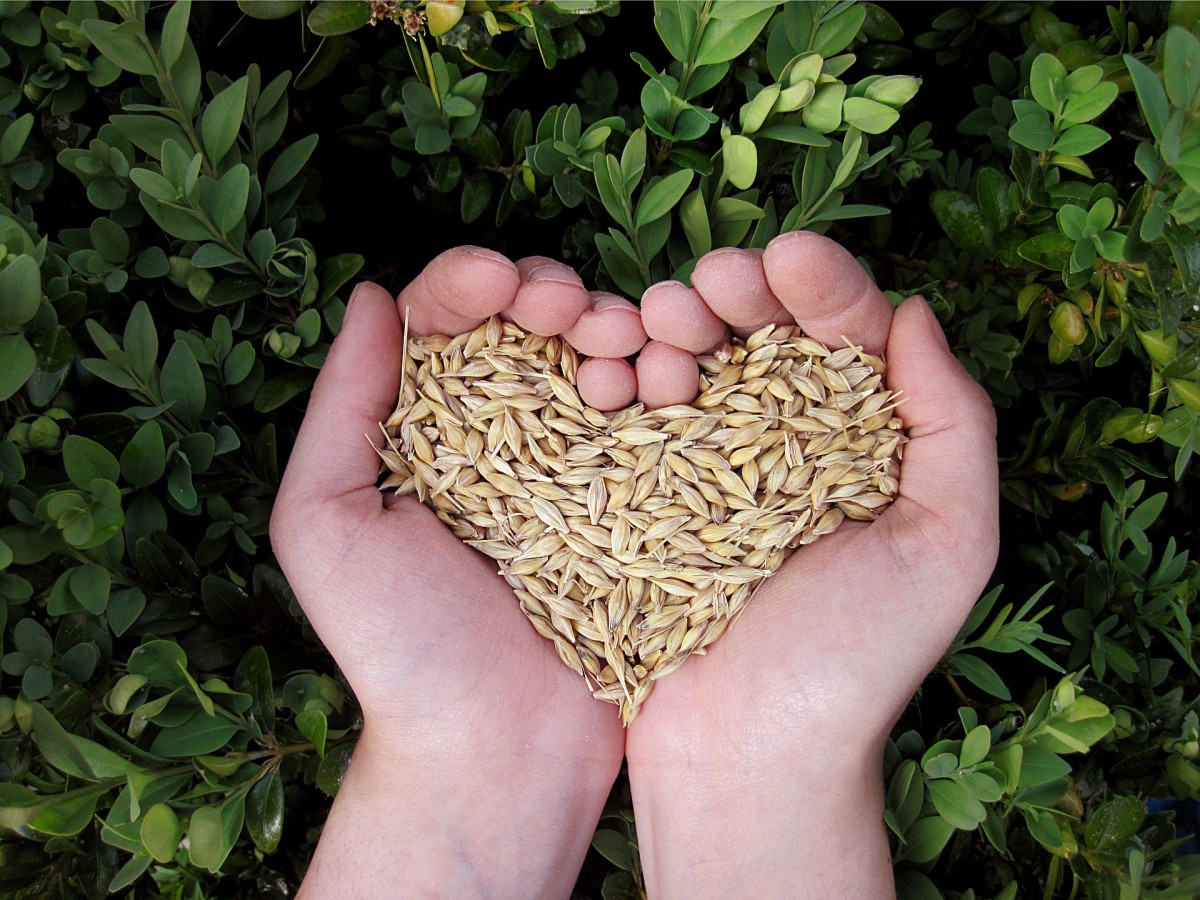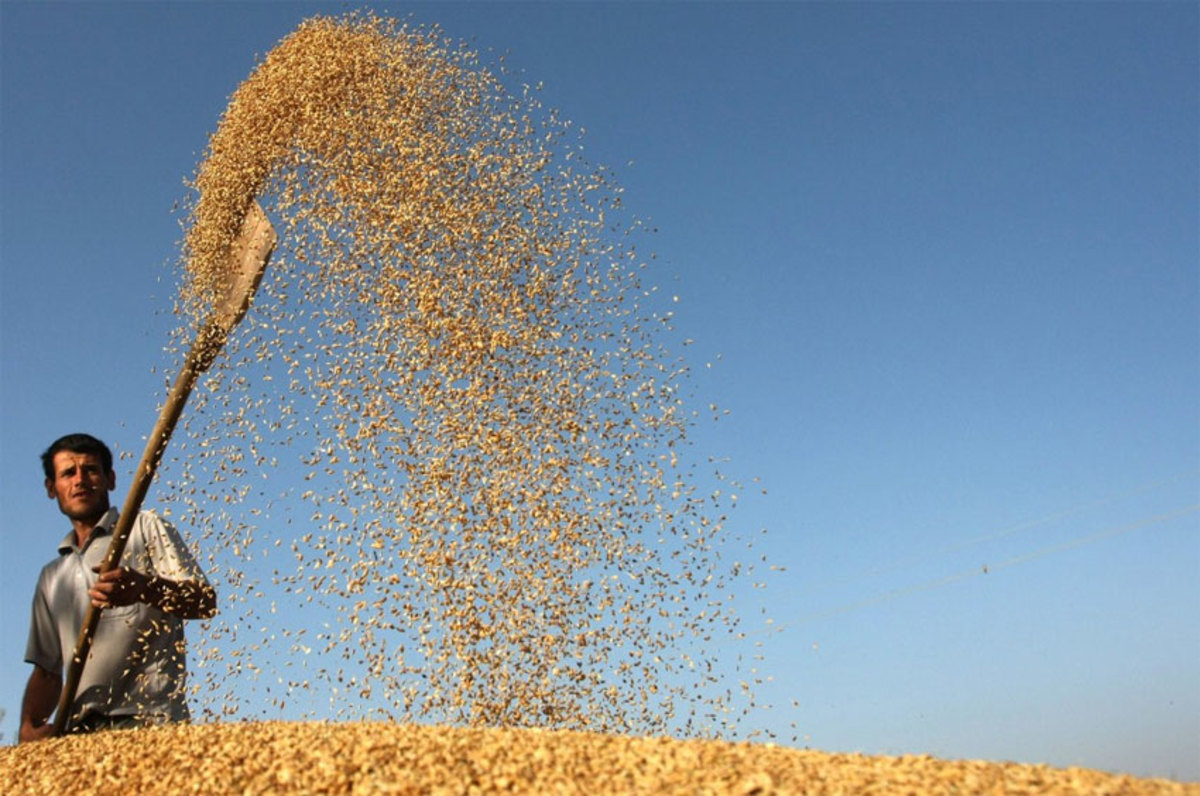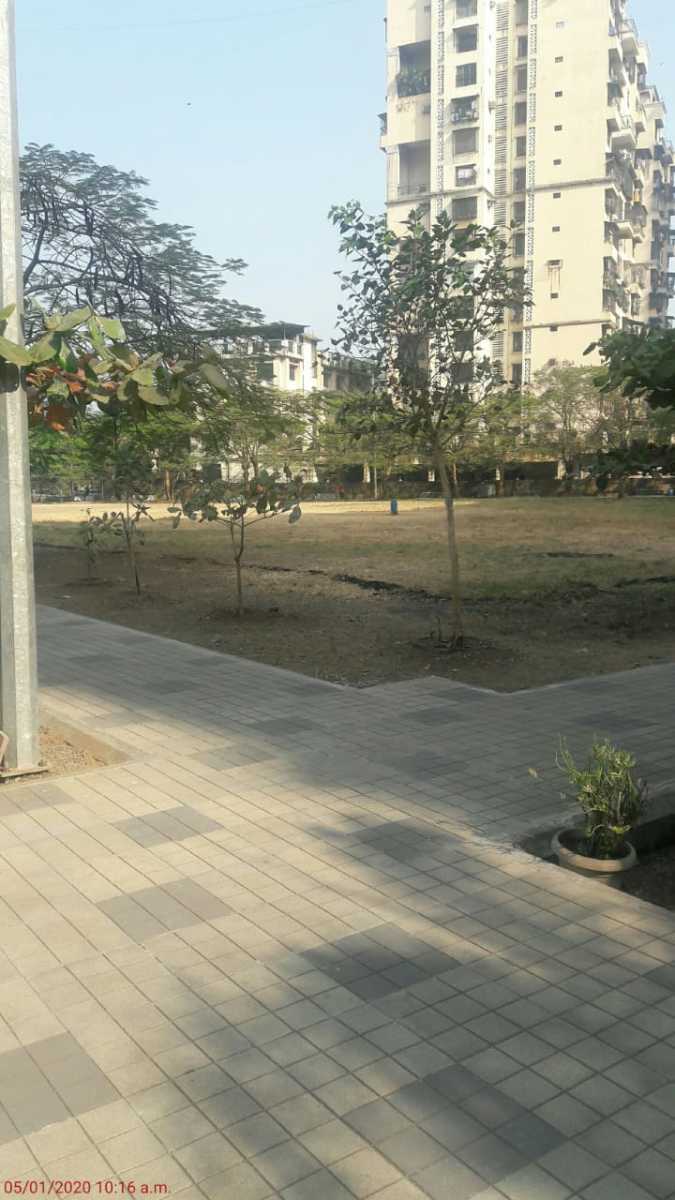- HubPages»
- Politics and Social Issues»
- Environment & Green Issues»
- Disasters & Recovery
Survival Prepping 101 Getting Started
Oh No! it's the end of the world

What are you afraid of?
prepping present participle of prep (Verb)
Verb
- Prepare (something); make ready.
- Prepare oneself for an event.
Some current popular TV shows and all too recent world events have brought awareness to the growing number of families who are becoming preppers. For the most part these are normal people who understand that the world is not as safe as it once was and who choose to take action to ensure that their family has the best chance of survival. For many there is a single specific fear that they think is most likely to occur and they base their survival needs on that scenario. The levels or preparedness range from stockpiling food and water to owning a secret underground bunker buried in the wilderness. Some of the more common reason for prepping are:
- Natural Disasters
- Economic Collapse
- Governmental Collapse
- Solar Flares and EMF disruption of the power grid
- Pandemic Threats
- Nuclear Attack
- Zombie Apocalypse (You can't have this list without it!)
While we may not agree on all the possible reason as to why to start prepping, one should not overlook the basic needs that we will all have should any of those events occur. People will often ignore the reality of how quickly society will break down following any type of catastrophic event. The question you will need to answer for you and your family is; do you have the basic supplies, equipment and skills to remain safe to ride out the event and civilization can be re-established?
This guide is not meant for the experiences prepper, you already know all this and are probably way ahead of anything in this guide. This guide is however for the novice just starting out or for the family who looking to start by covering short term catastrophe needs.
What items disappear first in an emergency?
In a serious emergency many people will revert to a self preservation mode of behaviour. There will be a mad rush to collect whatever available supplies are remaining on store shelves. It is a panic caused by not being prepared and then suddenly needing to be. Living in the northeast part of the United States I see this behavior even for smaller events like snow storms. Living in this area we all know winter is coming, we all know there will be snow, we have news stations telling us for days in advance that bad weather is coming our way. Yet always on the day of the storm store are packed with people scrambling to buy supplies they will need to ride it out. But the behavior of the crowd is different. The people become agitated, aggressive and obsessed to get what they need at all cost. I have seen fights break out over the last loaf of bread in a store.
Unfortunately the mindset of singular self preservation will outway choosing organized group or community survival. This will lead to violent clashes as people scramble to collect what they need and the severity will increase as available supplies decline. Sadly, the truth is that these post event efforts will not lead to longer survival times. To grasp this better let me ask the question this way. Take a look at the list below of common items that disappear within the 1st 24-48 hours of a major event.
How many of these will you need for you and your families survival should the event last for a week or longer? Now how many of these items will you be able to collect post event, while fighting with an entire community or city looking for the same things? One? Two? The real answer is not enough. You simply can not prepare to survive once the event has occurred.
- Generators
- Water Filter/Purification supplies
- Portable Toilets
- Oil Lanterns/Candles
- Camp Stoves
- Firearms and Ammunition
- Other Weapons (Knives, Pepper Spray, Bats, Axes etc)
- Propane
- Boy Scout Handbooks
- Baby Supplies
- Bottled Water
- Canned and Boxed Food
- Toilet Paper
- Thermal Underwear
- Vitamins and Pharmaceuticals
Bottled Water?
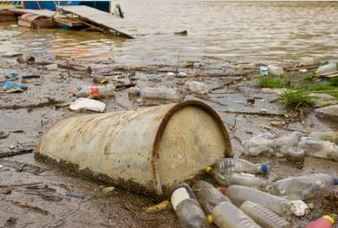
Water Purification Supplies
Prepping 101: Water
Without water we die. We all know this as truth.
In a major event there are two main concerns that will affect your access to water.
- Contamination: Often in natural disasters unsafe water can spill into public water supplies or seep into well water making faucet water unsafe to drink. The water will often become unsafe before new stations and emergency responders can communicate that the water supply is contaminated. In addition to contamination from natural disasters there is also the risk of waterborne pathogens as a cause for a pandemic.
- Power Failure: Failure of the power grid is a real concern resulting from multiple possible events. Our public water stations requires power to operate. In the event of widespread power loss public water would cease to operate within a very short period of time starting with a reduction in water flow leading to an eventual stop.
With this in mind I like to think about your water needs on two scales. Short Term and Long Term.
Short Term - This is water that is stored in containers for easy storage and immediate use. Bottled water in 5 Gallon Water Jugs or watercooler tank refills make great first line water sources. Both of these are easy to transport should you need to evacuate.
You may also want to consider purchasing a bathtub bladder. Bathtub bladders are large bags that you place in a tub and fill from the faucet. These can be deployed and filled in advance of bad weather or quickly filled at the start of an event. When storing water in a bathtub bladder it is a good keep items on hand to be able to purify it if you are unsure of it's safety. Most bathtub bladders will safely store up to 100 Gallons of water.
Long Term - Storing water for longer term survival can take up a lot of space. Unless you have the room to store a ton of water you will need to look at filterable or replenishable supplies. Rainwater collection systems are easy to set up and as long as they remain sealed stay reasonably clean making the water easy to purify. These are commonly sold today in gardening supply stores for "green" irrigation. As long as the rain itself stays uncontaminated it can provide a renewable water source.
You will also want to consider portable filtration and purification as well. We keep and supply of personal filtration straws, water purification tablets, and a UV light stick in our evacuation bag.
Purification - You will want to learn how to and practice multiple techniques for purifying water. Boiling is the most basic and will work well as long as you have access to a heat source strong enough to boil the water. You should keep a vessel for boiling the water near your supplies. I also like to keep iodine tincture solution on hand as well. A few drops, shake, wait and you are ready to go. A good tip is to add 1 vitamin C tablet per gallon. It helps with the aftertaste of water purified with Iodine.
Once you have the basics down you can experiment with more advanced water collection techniques. Such as using the sun to distill clean water from dirty water. Just knowing the basics will save your hide in 90% of emergency situations.
WaterBoB bathtub water bladder
Farming will shut down
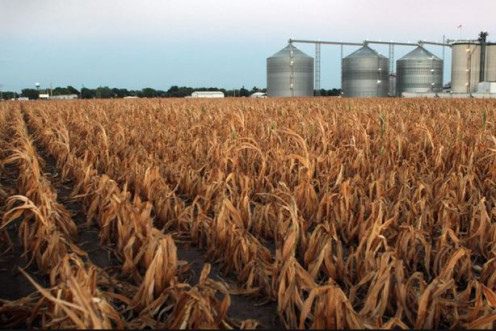
Long Term Food Supplies
Survival Expectancy
Based on my supplies and skills I can survive for...
Prepping 101: Food
Food needs will depend on the nature of the event and your location. Should the event cause a shutdown in food production and transportation, highly populated urban areas will suffer first. Should a grocery store remain open, the shelf stable goods will go first and fresh foods will spoil in a short period of time, especially in a power failure situation. The end results is high contention for the remaining available resource and mob rule mentality.
The human body is amazingly efficient at storing energy for lean times. While hunger pains cause discomfort an adult can go for many day without food. With only periodic access to food the body can survive for months. Having to care for children in a survival scenario changes things. Resilient? Yes but they also have higher energy outputs and a smaller biological energy storage capacity.
When storing food for a short term survival situation you need to consider a few things.
Redundancy - Many people will have one location they use for food stockpiling. However many things come into play that can ruin a food cache. Water Damage from a natural disaster, fire, rodents and insects can completely ruin a food store rendering it unsafe and useless. When storing food I would recommend multiple storage points in addition to you main food supply. In each location you should have a variety of long term nutrient dense items including shelf stable protein sources. In the event that you primary food supply is rendered useless this strategy can buy you time to come up with an alternative plan.
Nutrition - While it may seem simple in today's world to stock up on boxed goods and rice many of these are just not nutrient dense enough to sustain life for longer period of time. Sure they help ease hunger pains, but eventually vitamin and mineral deficiencies will set in causing malnutrition and disease. In addition to dried rice and beans also focus on canned vegetables and canned protein sources they store well and the cans are durable. Nuts (not peanuts) and seeds are great compact nutrition sources I keep mix of bagged and sealed tins with each food cache. I like to keep a number of dried meats (jerky) and fruits around as well. While they will not last forever they Focus more on nutritional density over bulk quantity.
Storage - Water, Moisture, Air, Bacteria, Rodents, Insects can get into your food supply and ruin it. At a minimum you will want to keep dry goods in sealed containers and higher up off of the floor. Things like rice and beans that come in bags are best placed in 5 gallon food storage buckets with screw top lids.
Shelves are a great place to keep things organized. Shelves can also topple over. Take the time to secure you shelves to the wall, and to add a lip to the front of your shelves to assist with keeping items safe and secure.
Take Out Food - You will want to have a cache of food and water that is pre-packed and ready to travel at a moments notice. An evacuation scenarios are unpredictable. You may have advance notice to collect and pack what you need to take with you. You may have to grab a bag of basic needs while running out the door. Each person should have a Bug-Out bag (evacuation bag) and in it I should contain 3 days of food and water purification. You should also consider a second grab and go food bag as well.
One area that people often forget is keeping supplies needed to open and prepare the food. We assume that what we need is in our kitchen. To be safe I would keep a can opener (manual) and a basic camping cooking set with your bug-out bag. I would store some cooking and cleaning supplies with you main food cache.
Practice - Cooking with limited resources can be difficult and often you don't know what you need until you do not have it. A good way to practice this is to go camping. Bring food items that you plan to use for survival and use them for meals. Can start a fire from a flint, From nothing? What do you cook on? How do you clean up? By challenging yourself in a safe camping setting you will be better prepared and capable when you actually need it to survive.
Home Sweet Home

Shelter 2 go
Prepping 101: Shelter
Home Sweet Home
You home will be your primary source of shelter from elements and people. For short term events you will want a good reliable generator, a few portable heaters and enough extension cords to keep the essentials running.
In the event of a large scale, widespread event you will need to learn to view your home in a new way. This is one area that could be a large post by itself. So lets just keep it simple here, but I would spend some time researching option.
Power - Generators are great, but eventually you will run out of fuel, or it will malfunction. From a security standpoint they can also be a sign to the looters that we are prepared and I have supplies come rob us. If you want to use your home to hunker down for longer term survival you may want to consider other options. A small solar kit is a good place to start. To make this the most effective you will want to be able to store the power generated during the day. This can be done using deep cycle batteries. There are plenty of kits and instructions online on how to set these up.
Heat - Modern heating systems require power. No Power = No heat. Propane or Kerosene space heaters will help in shorter term events. The length of time depends on how much fuel you can safely store. Eventually fuel will run out or a the heater will malfunction.
With the right solar set-up you can power small ceramic space heaters and keep it warm enough to not freeze.
I like having a wood burning stove or fireplace. Yes the smoke can be a security risk, but if you have a good defense plan I will take that trade off.
Geo-Thermal Heating on a solar power supply. The idea behind Geo-Thermal heating is to uses the ambient ground temperature below the frost level to warm water to heat/cool the base temperature of a house. Because the base temperature is higher than the outside temperature you auxiliary heating system has to work much less to maintain temperature. With no other assisted heating a Geo-Thermal system can warm a house to the mid 50's.
Shelter 2 Go! - Shelter in your home is one thing, but you will also want to consider shelter to go. Keep a tent ready and supplies needed to survive in the wild. You need to know what the limits of what you can carry on foot are and make sure you have the right gear ready to go on short notice.Do you know what natural shelter formations are in your area? It is wise to know what and where they are should you need to use them in an emergency.
As you become more advanced knowing how to make basic natural survival shelters can save your life in extreme emergencies. Learning the basics of outdoor survival is pretty easy and fun.

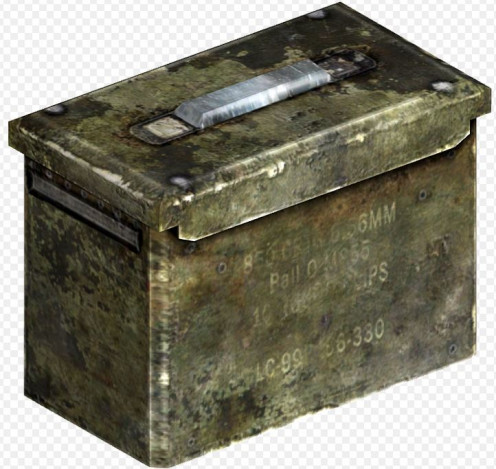
Prepping 101: Safety and Defense
So one day we will all have to defend ourselves from an unrelenting onslaught of zombies. I mean that is why you are reading this, right? While a zombie apocalypse might one day happen, lets be a little more pragmatic.
We have seen this on the news countless times. Shortly after disaster hits an area looters start ransacking places. Now as the severity of the disaster or event increases so does the desperation of people. It is a very real possibility to have to make a you or me decision when you or your families safety is threatened. In this situation you do not want to be unprepared and unarmed.
You need to think about security by distance. The further the distance you can stop a threat the better. The police use something known as the circle of force, which starts with posture and verbal commands to control a situation then escalates in severity as threat risk increases. You will want to think in similar terms.
So let's get the elephant in the room out of the way. If you do not already know how to fire, maintain and store a firearm I would highly recommend learning. While you can use other non-lethal deterrents, a firearm is still the most effective piece of self defense equipment you can own. I would find a qualified NRA instructor and take a basic handgun, Home Defense and Rifle class. There is no excuse for you or other family member not being properly trained.
Minimum Fire Power
- At a minimum I think every home should have at least one rifle
- At a minimum I think every home should have at least one handgun.
- At a minimum I think you should store at least 1000 rounds of ammunition for each caliber or firearm owned.
- At a minimum every member of the house above the age of 10 should be trained in the safe and correct operation of a firearm by a certified NRA instructor.
Property Defense: Home defense needs to be though about in three ranges. Outside your home and stopping a threat from invading. Inside your home at distance and stopping an invasion once security has been breached. Inside your home in a face to face confrontation.
Outer Circle: Rifle and Handgun - You know your property and your home. What are the access points for the property? What are the points of entrance inside your house? From inside your home where can you have the most effect in defending a threat outside? Learning where you have the most effective line of sight with the best cover is something you will want to figure out in advance. You want it to be instinctual should you need it. You may want to consider an option to board or limit access to first floor entrances. The less entry points you have the less you have to defend.
Inner Circle: Handgun, Pepper Spray - Your outside defenses were not enough, now what? In that event your family needs a well rehearsed well defensible position in your home. You will want to think about what that place is, and make sure that everyone knows where to go.
Immediate Personal Threat: Knife, Baton, Hand to Hand - Knowing how to defend yourself against close quarter personal attack is an extremely valuable skill. It can often be a difference maker against even armed but untrained threats. You will want to find a martial art that focuses on practical self defense, something simple and effective. Sadly many martial art schools have been become watered down "Belt Factories" where the practical application has been watered down. I personally like to recommend Wing Chun Kung Fu. It is a great close quarter, effective and easy to learn art that does not take a long time to use effectively.
Ammunition Storage: If you are new to firearms you will want a secure portable storage solution for your ammunition. I like using military surplus ammunition cans for storage. They are cheap, portable and durable. They are commonly available in two sizes 30 cal. and 50 cal. I use 30 cal. for handgun ammunition and .50 cal. cans for rifle ammunition. Make sure to rotate your ammunition stock over time. Using the oldest first for practice range sessions. Keep stored in a dry and secure area.
Other Weapons: Firearms while effective should not be your only line of defense. You should consider other options to have on hand as fall back or alternative options. I have items is every room of the house. Not all are obvious or lethal. For example in the kids room their baseball bats are in their closet. In the bathroom there is a 24" section of lead pipe under the sink. The key is to know where things are and how to use them effectively should you need to.
- Pepper Spray
- Hornet Wasp Spray - Very painful and greater range than pepper spray
- Metal Baton, Bat, Club
- Machete or Short Sword
- Axe or hatchet
- Bow and Arrow
- Sling Shot or Wrist Rocket
Prepping 101: Medical and First Aid
You never know when an emergency or disaster will strike. Being unprepared could lead to lack of access to prescription medication or immediate response 1st aid supplies.
Prescription Medication: Do you have a medical condition that requires long term usage of prescription medication? What would happen if your access was suddenly cut off? This is a scenario that you should think about and invest time and resources on plan. Consider some the following questions.
- Storage and Shelf life how long can it last without refrigeration?
- Will you physician write you a prescription to fill for emergencies?
- What other channels are available to stockpile?
- Can you spare a few from each re-fill to start building a slow immediate use stockpile?
- What holistic or natural treatment options exist for your condition? Is there an over the counter alternative that would work in emergencies?
- Is my condition manageable by diet? if so does my food stockpile plan reflect the best choices for managing my medical condition?
- If none of the above options are viable then; What is my plan to receive immediate medical assistance in the event of an emergency?
First Aid: Training, every adult should receive some formal First Aid training. This is above an beyond basic CPR. You should know how to clean and treat wounds, stabilize a fracture and treat for conditions such as shock, heat exhaustion and hyperthermia. I highly recommend keeping first aid reference books and or printouts with your medical kit for quick reference.
I recommend keeping two first aid kits. A larger more robust kit for home sheltering and a smaller duffle bag for evacuation scenarios. Both kits have the same contents but the evacuation bag has less of each.
- Many band aid options
- Many Gauze Pads and Wraps
- Sprain Wrap(s)
- Paint Stir Stick (splints)
- Compression Bandages
- Clotting Sponge(s)
- Ster-Stip wound closure Strips and Tinticure of Benzoin
- 5% LidoCaine cream
- Sutures (Available on Ebay)
- Antibiotic Ointment
- Alcohol
- Hydrogen Peroxide
- Iodine
- Pain Relievers
- Colloidal Silver Water as Antibiotic (Ebay / Web Search)
- Field Surgical Kit (Forceps, Tweezers, Scissors, Scalpel etc.)
- Nitrile Gloves
- Surgical Masks
- Soap & Hand Sanitizer
- LED Lighting and Extra Batteries (Flashlight and Headlamp)
- ParaCord
- Super Glue
- Antibiotics
Antibiotics: In the event of a serious event access to medical supplies and antibiotics might not be available. When preparing for longer term survival you will need to plan for one day having to battle infection. I have two option your you to consider.
Colloidal Silver and Colloidal Silver Generators have been around for a long time. Before modern antibiotics silver in colloidal form was used very effectively. It can be purchased pre-made or in a generator kit to make your own. I would do your research on how to make, store and apply it to treat infections.
Pharmaceutical Antibiotics: Here in the US it is difficult to stockpile prescription antibiotics for long term survival. However there is a viable alternate source to be used in life threatening emergency situations only. The pet trade sells versions of modern antibiotics over the counter. They are manufactured in the same factories as the pharmaceutical counterparts, but packaged in less stringent facilities for the pet trade. They have versions of amoxicillin (very shelf stable), Penicillin, Cycline and Ciprofloxacin are sold in 250mg and 500mg capsules. While these are not sold for human use I feel better knowing I have a large variety of options in storage should civilization as we know it come to an end.
Practice & Research: Unless you are a doctor you will not know how to treat every injury or condition. But you can become better education and prepared should you have to respond and treat yourself or a family member. Research and learn about the human body and how to help it repair. Practice closing wounds, Chicken Skin is great for suture practice! This is the stuff you do not want have to figure out on the fly.
Make sure you are not the only person in the house with training. Who is going to help you if you are the one who requires treatment?
(B.O.B) Bug Out Bag
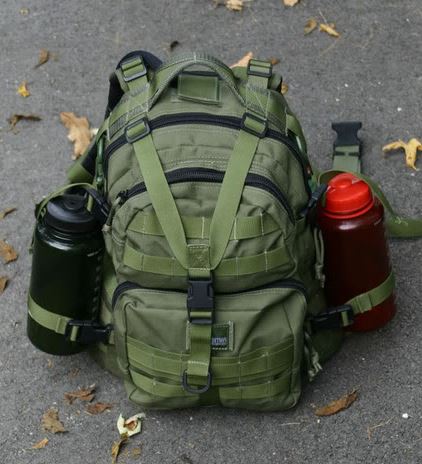
Survival Blankets are a Must
Prepping 101: Evacuation
By now you have heard the term "Bug Out Bag". A bug out bag is a small part of having a multi-faceted evacuation plan. In order to better understand this you need to shift you're thinking of what evacuation means. There are different levels of urgency to evacuate. For example you could have a few days to plan what to bring with and how to get it there. You could have a few hours notice, but still some time grab high priority items. You may face the reality that you have seconds to leave your location and have to survive with what you can carry. When preparing your evacuation plan I would start with the most critical survival option, immediate bug out, first. Why? because this is the scenario that can happen at any moment. This is the scenario that you can not say "Wait" I just need to grab X. Once you know that you are prepared to leave on a moments notice you can start planning secondary items to for an evacuation of less severity.
Bug Out Bag: You will want at least one bag that contains the critical supplies for survival in the wild. The bag needs to be large enough to carry enough items, but light enough that you can carry and maneuver while running for some distance. Lets look at the critical items that should go 1st.
- Fire: Without fire you can not purify water, ward off animals or fight off the cold. While matches or a lighter are good, I would recommend flint or magnesium fire starters as well.
- Water: At least 1 bottle for immediate use. A filter straw or iodine for longer term usage. Don't forget a portable metal container for boiling water.
- Food: Dried, Think dried light compact sources. I like jerky products and dried fruits. They are nutrient dense enough to keep you going for a few days.
- Shelter: There are few options here so be creative with what you can carry. For me it is a Tarp, A few mylar emergency blankets, A light sleeping bag that compresses down extremely small and some fabric mesh.
- Warmth: Depending on where you live, it can be wise to keep a jacket and rain poncho in your bag at all times. I also use the mylar blankets mentioned above.
- Security: While I keep my handguns locked separately. I can access the box key and ammo to go in seconds. My to go handgun is a .22 target pistol that I can use for security but I can also use to hunt small game at a greater distance. Some may opt. for pure firepower and security. If i could only grab one, I opted for versatility. I also have a few knives in my bag. At least one can be corded to the end of a stick for a makeshift spear.
- Hunting and Fishing: The handgun mentioned above will work for small game. (Squirrel, rabbit etc.) I keep a basic set of fishing equipment in my bag as well. No rod or reel. But rather line, hooks, weights and lures. My plan also includes making snares. So i keep small rolls of wire and cording to use.
- Medical: I keep a small but well stocked 1st aid kit in my bag. It contains basic bandages as well as 2 sets of suture supplies. I also keep about 10 days of antibiotics and pain medication in the kit as well.
- Sanitation: One roll of TP. 2 travel packs of wet wipes. A few compact dry fold towels. 1 Bottle of Hand Sanitizer, I small bottle of alcohol, 1 small bottle of iodine, i small bottle of Hydrogen Peroxide.
- Lighting: A few LED flashlights and 2 sets of spare batteries.
- Radio: Simple AM/FM 2 sets of batteries.
- Boy Scout handbook and Field Guide
- Duck Tape: Big Roll
Once these supplies are in your bag you will have to decide if you can add additional supplies. Just remember you have to carry it, and you may be running as you do it.
Location, Location Location: If you are part of a family there is no guarantee that you will be able to evacuate together. You must have a pre-determined meeting point as well as a fallback location (or two) to meet should you get separated. One thing to consider is what happens should you evacuate to two different locations? The concern is that you run the risk of missing each other if you are both checking the other location. You need to establish a plan for finding each other if you are separated. Also signals at each location that you are alive, but heading to another location.
Once you have the basics, you can now start to think about less urgent evacuation. This part of the plan will depend on where you will go and transportation options. My advice is to have these items already packed and ready to move. At the very least it should contain expanded versions of the items listed above.
Starter Hole
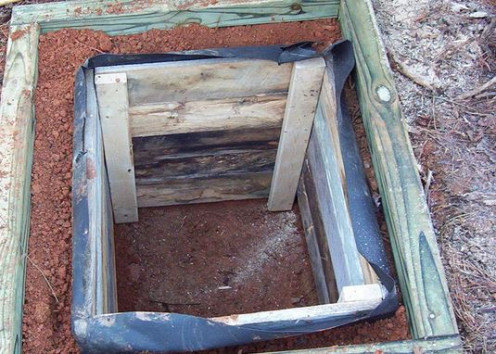
Preppint 101: Sanatation
Let's face it, eventually you will have to go! In a long term disaster you may or may not have access to running water and proper sanitation. Since you will want to contaminate your living quarters you need to consider what options you have available.
Portable Toilet: This is a useful option for shorter term option. These are smaller chemical toilets that keep waste stored in a container until it is full. Eventually they will need to be dumped, cleaned and re-filled with chemicals. The frequency of this will depend on the number of people using it, as well as the size of the unit you purchase.
Outhouse: As a species we survived without plumbing for centuries. Even in highly populated with a little planning we handled sanitation needs for the masses. The easiest thing that you can fashion is a version of the good old fashioned outhouse.
- Dig a hole at least 2' X 2' X 3'
- Line the sides of the hole with tar paper or a thick tarp. Do not cover the bottom.
- Either frame a box to hold the paper in place or use log, branches and sticks to form side walls.
- Add dirt back to fill any gaps between the side wall and frame.
- Frame or add a box seat over the hole.
- Consider privacy options, either building a frame, tarp, tent etc. Is will be important to create a vent tube that goes from the seat box to above the top or roof of the privacy enclosure. This is to prevent gases from becoming trapped in an enclosed space.
Final Remarks
I hope you found the information presented above on survival prepping useful. Remember that being prepared is something you have to work at and approach in stages and refine as you learn what works best for you and your family. My goal was not to provide the ultimate checklist. It was however intended to introduce new concepts in what think about when prepping. In the end I truly hope we never need to use any of it, but we will all be happy should we have to and we are well prepared to handle whatever comes our way.
Take care, and God Bless
Help spread the word
If you have found the information in the article helpful please take a moment to share it with others.
You can do this by:
- Liking on Facebook
- Pinning on Pintrest
- Tweeting it on Twitter
It will only take a few seconds and the tools to do this are right on this page. By doing so you help increase this pages overall search engine rankings and increase the chances of someone else discovering this page.
Thank You kindly





